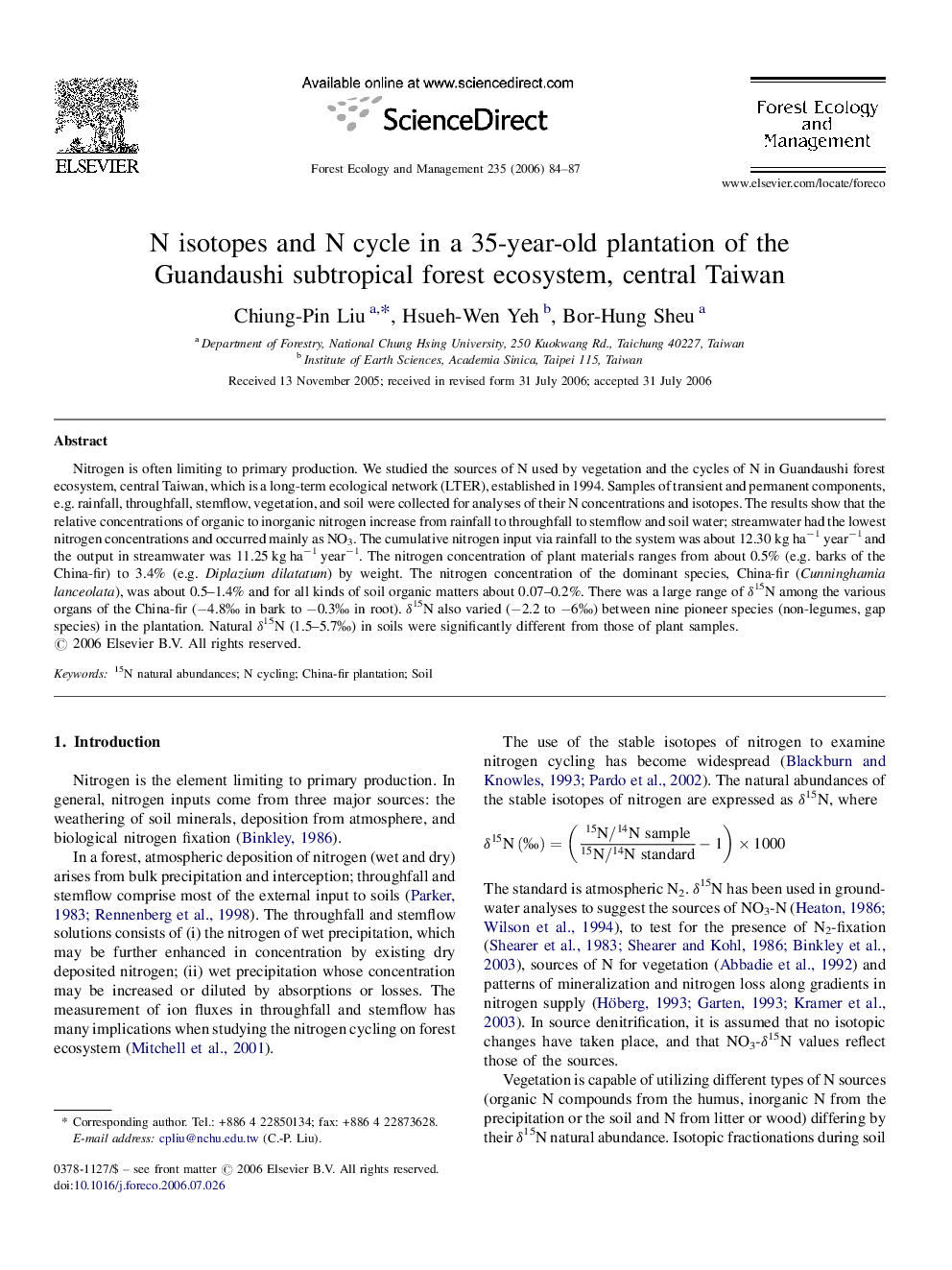| Article ID | Journal | Published Year | Pages | File Type |
|---|---|---|---|---|
| 90126 | Forest Ecology and Management | 2006 | 4 Pages |
Nitrogen is often limiting to primary production. We studied the sources of N used by vegetation and the cycles of N in Guandaushi forest ecosystem, central Taiwan, which is a long-term ecological network (LTER), established in 1994. Samples of transient and permanent components, e.g. rainfall, throughfall, stemflow, vegetation, and soil were collected for analyses of their N concentrations and isotopes. The results show that the relative concentrations of organic to inorganic nitrogen increase from rainfall to throughfall to stemflow and soil water; streamwater had the lowest nitrogen concentrations and occurred mainly as NO3. The cumulative nitrogen input via rainfall to the system was about 12.30 kg ha−1 year−1 and the output in streamwater was 11.25 kg ha−1 year−1. The nitrogen concentration of plant materials ranges from about 0.5% (e.g. barks of the China-fir) to 3.4% (e.g. Diplazium dilatatum) by weight. The nitrogen concentration of the dominant species, China-fir (Cunninghamia lanceolata), was about 0.5–1.4% and for all kinds of soil organic matters about 0.07–0.2%. There was a large range of δ15N among the various organs of the China-fir (−4.8‰ in bark to −0.3‰ in root). δ15N also varied (−2.2 to −6‰) between nine pioneer species (non-legumes, gap species) in the plantation. Natural δ15N (1.5–5.7‰) in soils were significantly different from those of plant samples.
